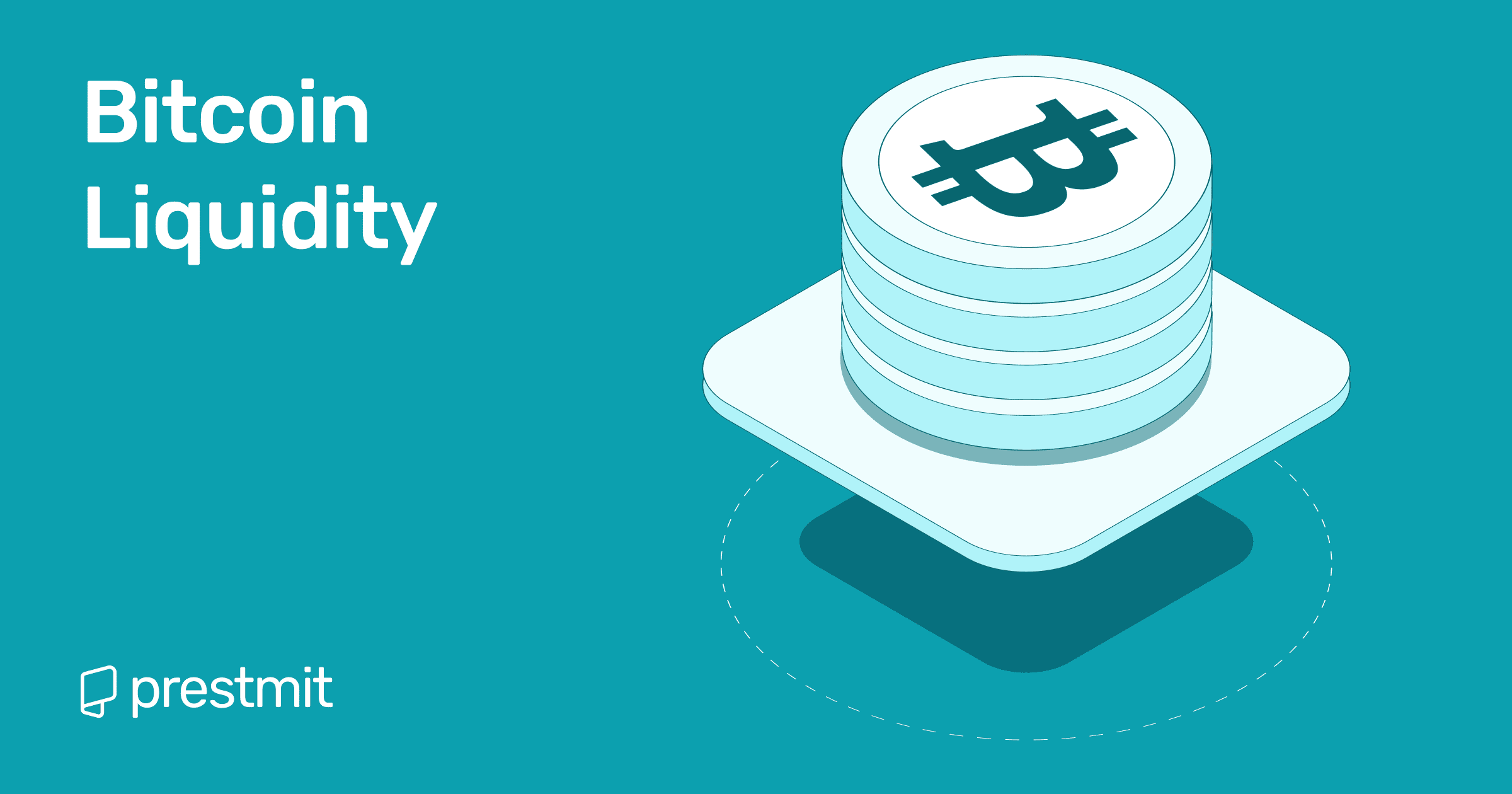Table of Contents
Liquidity is one of the most important features of any financial market. It describes how easily an asset can be bought or sold without causing big changes in its price. Stocks, bonds, and currencies have all been studied for decades in this regard. Bitcoin is the world’s largest and most widely traded digital asset and offers a unique case for understanding liquidity.
Bitcoin liquidity reflects the strength of the market, the confidence of its users, and the ability to adopt it on a large scale. The more liquid Bitcoin is, the better and more stable the market becomes.
What is Liquidity?

Liquidity measures how quickly and cheaply you can turn an asset into cash or another asset without affecting its price too much. In the case of cryptocurrencies, it shows whether you can sell or buy a token instantly without worrying about price swings caused by your trade.
There are many buyers and sellers when a market is liquid. This means trades are executed quickly, prices remain steady, and slippage (the gap between expected and actual price) is small. For example, Bitcoin and Ethereum are highly liquid because they are traded on almost every major exchange with very high volumes.
On the other hand, when liquidity is low, trades take longer to execute and even small buy or sell orders can move prices dramatically. This often happens with small tokens on less active exchanges. If you try to sell such an asset, you might not find a buyer quickly, or you may need to accept a much lower price than expected.
Centralized exchanges like Binance and Coinbase usually provide high liquidity because they have large user bases and market makers. Decentralized exchanges (DEXs) such as Uniswap rely on liquidity pools. Their liquidity depends on how much crypto users are willing to contribute to these pools.
Why Does Bitcoin Liquidity Matter?
1. Smooth Trading
Orders are quickly filled when there is high liquidity. You don’t need to wait long to buy or sell Bitcoin, and the prices you see are close to the prices you get.
2. Price Stability
A liquid market is more resistant to manipulation. When there are many active buyers and sellers, no single trader can easily move the price by making a big trade. This stability builds confidence among investors.
3. Lower Slippage
In liquid markets, slippage is minimal. For example, if you want to buy Bitcoin at $60,000, you are likely to get it very close to that price. In an illiquid market, you might end up paying $61,000 or more for the same amount.
4. Market Health
Liquidity reflects how strong and healthy a market is. If Bitcoin markets are liquid, it shows wide interest, active participation, and trust in the system.
5. Institutional Adoption
Large investors like hedge funds and banks require liquidity to enter a market. Without it, they risk moving the market against themselves when making big trades. More liquidity encourages institutions to participate, which further stabilizes the market.
6. Exit Options
Even long-term holders need liquidity eventually. If you cannot sell your Bitcoin when you want to, its usefulness as an asset drops. Liquidity ensures that when the time comes to cash out, you can do so smoothly.
Factors Affecting Bitcoin Liquidity
1. Popularity and Adoption
The more people use Bitcoin, the more liquid it becomes. As more merchants accept it and more investors trade it, demand and supply both increase and this makes the market deeper.
2. Market Structure
Centralized exchanges usually provide higher liquidity because they have large user bases and professional market makers. Decentralized exchanges are growing but often rely on the size of their liquidity pools, which may not always match centralized platforms
3. Regulation
Clear and favorable regulations attract more institutional investors. This boosts liquidity. On the other hand, unclear or strict rules can scare off big players, reducing market depth.
4. Volatility
When prices swing too fast, traders may hesitate to enter the market. This reduces liquidity. Conversely, stable conditions make it easier for people to trade, improving liquidity.
5. Volume
Bitcoin’s trading volume is one of the highest among all cryptocurrencies. Higher volume means more activity and therefore more liquidity.
6. Number of Exchanges
The more exchanges that list Bitcoin, the more places there are for people to buy and sell it. This widens access, increases trading activity, and adds to liquidity.
How to Measure Bitcoin Liquidity

It’s important to check liquidity first when you’re trading or investing in Bitcoin. Here are the key ways to measure Bitcoin liquidity
- Trading Volume: Check the 24-hour trading volume on sites like CoinMarketCap. Higher daily volume means more liquidity.
- Market Capitalization: A larger market cap usually brings more traders, which leads to higher liquidity.
- Bid-Ask Spread: Check the difference between the buying price (bid) and selling price (ask). A small gap means high liquidity, while a wide gap signals low liquidity.
- Order Book Depth: Vow how deep the order book is on exchanges like Binance or Kraken. A deep book with many orders on both sides means strong liquidity.
- Trading Method: Centralized exchanges use order books, while DEXs use automated market makers (AMMs). Liquidity depends on how much funding is in those AMM pools.
- Price Consistency Across Exchanges: Liquidity is strong if Bitcoin trades at similar prices across different exchanges. However, significant price differences suggest weak liquidity.
- Exchange Listings: Check the number of exchanges that list Bitcoin and how many trading pairs it has. The more listings, the better the liquidity.
Link Between Bitcoin Liquidity and Volatility
Liquidity and volatility are closely linked and one usually influences the other. When liquidity is high, volatility tends to be lower because there are enough buyers and sellers to absorb large trades. If someone sells a large amount of Bitcoin in a liquid market, there are enough buyers to take the other side without the price moving too much.
However, even small trades can create sharp price changes when liquidity is low. If there are not enough buyers in the market and someone tries to sell a large amount of Bitcoin, the price can drop quickly. This is why small-cap tokens with low liquidity often experience wild price swings.
Bitcoin liquidity is important because of its role as the leading cryptocurrency. Periods of low liquidity, such as during market crashes, often coincide with extreme volatility. For example, during the 2020 COVID-19 market panic, Bitcoin’s price dropped sharply as liquidity dried up on many exchanges.
Another important link is investor behavior. When liquidity is low, traders may panic more easily, causing faster and sharper moves in price. High liquidity cushions this effect by allowing trades to flow smoothly.
Frequently Asked Questions on All You Need to Know About Bitcoin Liquidity
How does liquidity affect the price of cryptocurrencies?
Liquidity keeps prices stable by matching buyers and sellers. Low liquidity leads to slippage and erratic price movements.
Is trading high-liquidity coins safer?
Yes. High-liquidity coins are easier to buy and sell, less prone to manipulation, and safer during volatile periods.
Can liquidity help me decide which crypto to invest in?
Yes. Liquidity is a key indicator of market strength and interest. A coin with high liquidity is generally a safer bet.
Does Bitcoin liquidity matter for long-term holders?
Yes. Even if you’re holding long-term, you’ll eventually need to sell. Liquidity ensures you can exit when you’re ready.
What happens if liquidity dries up completely?
Trades may not execute at all if there’s no liquidity. Prices can collapse, and markets may freeze temporarily.
Conclusion
Bitcoin liquidity is one of the foundations of its success as it ensures trades happen smoothly, prices remain stable, and investors feel confident in the market. High liquidity encourages institutional adoption and helps Bitcoin act as a reliable store of value. Exchanges, liquidity providers, and regulators will continue to play a big role in shaping Bitcoin liquidity. Traders and investors can make better decisions, protect themselves from risks, and maximize opportunities when they understand how liquidity works and how it connects to volatility,
Last updated on September 16, 2025

